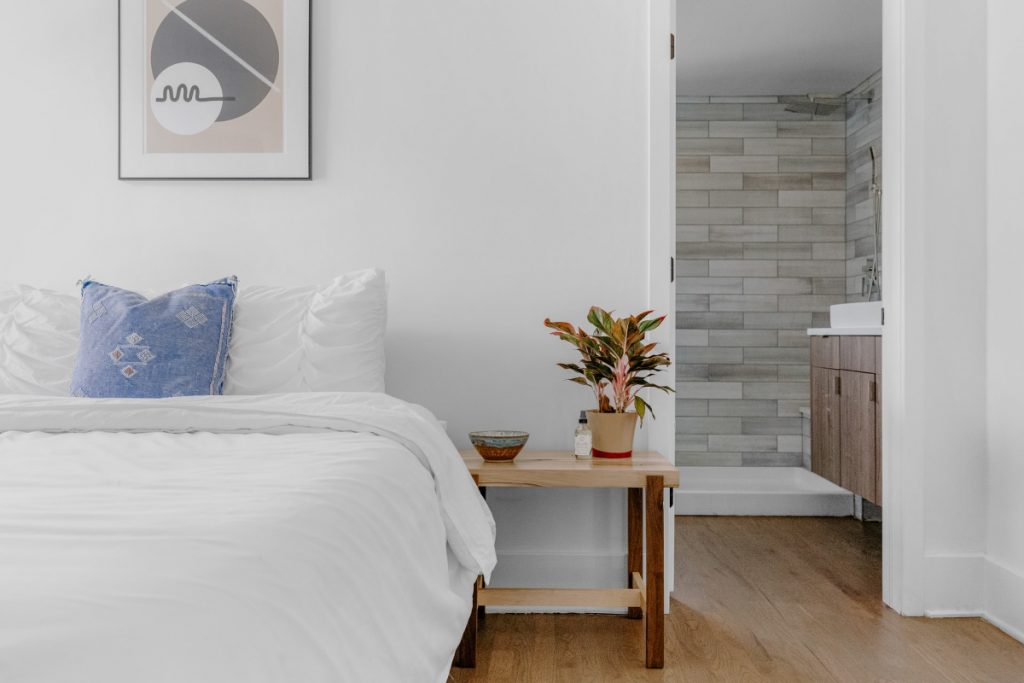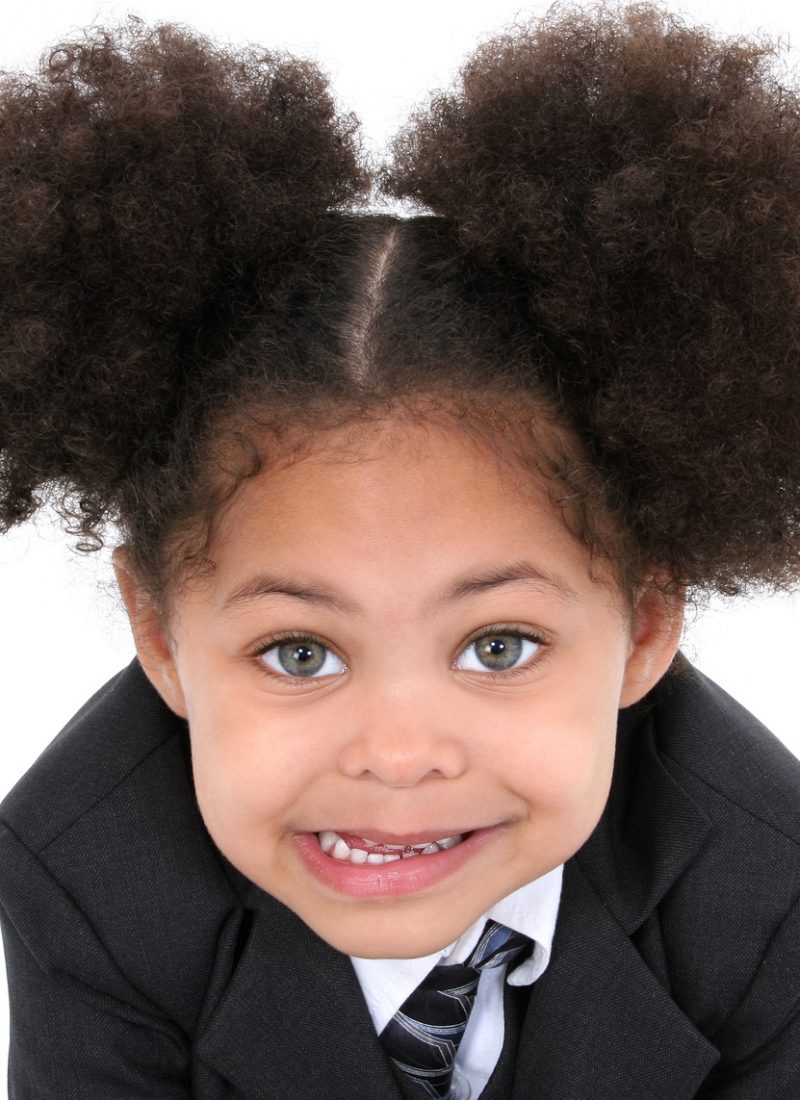
Quarendreaming: Why your pandemic dreams and nightmares are so weird and intense—and what to do about it
Are you dreaming more vividly these days, and remembering more of your dreams? Are you having nightmares that wake you from sleep, or leave you feeling anxious the next morning?
If you said yes to either of these questions, you’re not alone. These days, a lot of us are having darker, more upsetting dreams—and remembering them more often.
A recent poll of over 2000 people showed:
- 53% of the audience has had an increase in vivid dreams since quarantine began
- 21% of the audience have had an increase in nightmares, with at least 1 this past week
- 45% of the audience has noticed a small difference in their sleep for the worse… and
- 29% have noticed a significant difference in their sleep for the worse
What are the obvious offenders? Social isolation, massive upheaval to daily routines, fears about health, finances, and deep uncertainty about what lies ahead. As well as a shifting combination of boredom, overwork, stress and anxiety. That pretty much describes how most of us are living these days, since the onset of the coronavirus pandemic.
It’s challenging our diets:
It’s challenging our diets: A lot of us are moving from one “comfort food” meal to the next (think of all the lasagnas and banana breads on Instagram).
Its challenging our exercise: stuck at home working and, in many cases, simultaneously taking care of children, many of us are struggling to get our regular exercise, mostly because we feel so exhausted!
Its challenging our sleep: I’m hearing from so many readers and patients about their insomnia symptoms, the restless awakenings, the racing thoughts they can’t quiet at night. I wrote recently about the deep connections between stress and sleep—connections we’re all experiencing strongly right now. And many of you are having nightmares and disturbing dreams. I wrote a couple weeks ago about the coronavirus and nightmares, and why our bad dreams aren’t an entirely bad thing.
Dream content has changed (Normal vs Stress vs Nightmare).
I’ve had many people tell me their dreams are tackling the coronavirus directly, dreaming about hospitals and illness and trouble breathing (these can also be signs of Sleep Apnea and Snoring). Others are dreaming about the virus in different ways, such as nightmares about violence, loss, uncertainty, and threats.
One of my patients’ dreams of a friend who is an ER doc in a city hard hit by the virus, getting sick and dying on a gurney (this would be a nightmare). (Thankfully that friend is healthy in real life.)
Dreams seem more REAL. People are having stranger dreams, with odd characters and vivid combinations of the average and the bizarre. And these dreams often feel different—more striking, more charged with meaning, more vivid, more real—even if the circumstances of the dreams are fantastical. I’ve talked a lot about dreams and nightmares over the years, and the science behind how nightmares work, and how to help make your dreams more peaceful and positive.
The coronavirus pandemic is spurring a whole lot of bad dreams—and a lot of new science studying the phenomena of dreaming.

The emerging science of the coronavirus dream world: Here is what is being studied:
Scientists are racing to study every aspect of the coronavirus and Covid-19, the disease it causes. That includes the psychological impact of the global pandemic, it’s impact on sleep, and its effect on dreams. There is surely much more to come here, but these initial findings shine a light on the psychological upheaval that’s occurring, and how it is making its way into our dreams.
A number of studies happening right now are tracking the changes to dreaming being caused by the pandemic, and making several discoveries.
Why, exactly, are our dreams being so deeply affected by the pandemic? And how can we calm and quiet these upsetting, sleep disrupting dreams and nightmares so we can the sound sleep we need right now?
The answers to those questions touch on some of the most well-established, compelling theories of dreaming—and on the mechanics of sleep itself.
FYI, if you want to get straight to the recommendations, go to page 6 (below)!
What do Dreams Do?
Dreams are a way for our brains to process stress and emotionally-charged memories. This is one of the most well studied, commonly held theories about dreaming—that our brains employ dreams to work through emotionally difficult and stressful experiences, to reduce their psychological load and make them less disruptive to daily functioning.
Clearly most of us are coping with unusual levels of stress right now, and our brains are using dreams to process it. As unwelcome as nightmares and disturbing dreams feel, they may be a sign of the brain doing some essential, important work to ease the intensity and emotional charge of our currently heavy daily load of stress and worry. And our nightmares can also serve the purpose of alerting us to anxieties we haven’t yet become aware of, or given name to.
Research into trauma and its relationship to dreaming and sleep has shown that the more closely and directly people are affected by traumatic events, the more likely it is for their sleep to be disrupted and for nightmares to be intense. Nightmares are highly common among people with post-traumatic stress disorder. Nightmares associated with PTSD also are more likely to be direct replays of the trauma triggering event. In 2009, researchers looked at the impact of an earthquake in Italy, and found the most disturbing dreams and disrupted sleep occurred in people who were nearest the epicenter of the quake.
The people in the “epicenter” of the coronavirus pandemic include health care workers and other first responders, people who are sick or who are close to someone who is sick. There are also millions of people who have been laid off from jobs, and people who are facing economic crises that place them in an economic “epicenter.”
But it’s important to note: you don’t need to be at any of these “epicenters” of the crisis to experience trauma, sleeplessness, anxiety, and nightmares from the effects of the pandemic. Trauma and its fallout on sleep and dreams is in no way exclusive to first responders or the sick and their families. We’re living through unprecedented, frightening times, with a future outlook that is deeply uncertain. That’s a universal—and potentially traumatic—reality right now.
How does the brain undertakes emotional processing during sleep and dreams?
We know something about these mechanisms, and it’s pretty interesting. During stages of sleep, areas of the brain enter a state of what’s known as “emotional disinhibition.”
This occurs particularly during REM sleep, which is when we do most of our vivid, complex, emotionally-laden dreaming. To achieve this state of emotional disinhibition, a region within the brain known as the dorsolateral prefrontal cortex shuts down. This part of the brain performs many complex executive functions involving memory, self-awareness, attention, and inhibition and control of emotional responses. The effect of this part of the brain shutting down creates an unselfconscious free flow of emotion within dreams. Basically, it’s “Party Time” for your brain, and it can now go outside the realm of reality (because you are in the unconscious) where the laws of physics simply do not apply.
Bottom Line: Dreams are where your brain processes information.
An important exception is lucid dreams. During these dreams, part of the dorsolateral prefrontal cortex appears to become more active, not less, which scientists think contributes to the self-awareness and ability to control and direct activity within lucid dreams. I’ve written about lucid dreams—what they are, how they work, and how to encourage your brain to dream more lucidly.
Dreams are a ‘rehearsal’ for real-life threats and challenges
This well established, long-held theory of dreams provides another explanation for why so many people’s dreams are so heightened, intense and disturbing right now.
So much of the study of dreams revolves around the question: why do we do it? Amazing as it may sound, we don’t yet know for sure the purpose of dreams. Here’s a primer I wrote a few years ago on the basics of dreaming, including the most popular and well-researched theories about the purpose of dreams.
One of the most interesting and compelling hypotheses of dreaming is this one, known as the threat-simulation dream theory.
According to this theory, and the scientific evidence that supports it, dreams are a rehearsal space for the mind to “game out” threats and obstacles it anticipates facing in waking life, and practice how to best respond to these challenges. In this theory, dreams are a kind of virtual reality “training camp” simulation in the brain, with a focus on tackling the challenges the brain has identified as the most pressing and important to prepare for.
When you think about it in evolutionary terms, this theory makes a lot of sense. Imagine our ancient human ancestors living under constant and immediate threats–from animal predators, from human rivals, from forces of nature. Today’s predators and challenges are somewhat different, but the capacity for the brain to run simulations when faced with threats and danger remains intact. Keep in mind, the body does not distinguish between the stress and agitation caused by thinking about losing one’s job or a loved one becoming sick, and the stress and agitation caused by being chased across an open field by a wild animal. When we’re constantly anxious and worried, our bodies take up residence in “fight or flight” mode, and dreams may take up the work of helping us rehearse our way out of our problems.
Bottom Line: Dreams are a good place to “practice” or “train” for real life situations.
We draw heavily on daily life for dream material
Pieces of our daily experiences show up in dreams all the time, a well-studied phenomenon known as “dream incorporation.” Dream research has shown that some memories from daily life show up in dreams immediately, that same night. This immediate transfer of memories into dreams is known as “day residue.” Other memories from waking experience are subject to what scientists refer to as a “dream lag.” That’s a delay, typically of about 7 days, between a memory being created in the waking day and it showing up in a dream.
For so many of us, the world we occupy is small right now—much smaller than what we’re used to. Right now, much of our activity, movement, and social interaction is curtailed. And many of us are consuming a daily dose of a lot of troubling news. Under such restrictive, repetitive daily living conditions, our brains are likely drawing more heavily on older memories for dream material. That explains why your childhood friend or college roommate might pop up in the middle of a pandemic dream. Plus, snippets of the media we’re consuming every day, whether in text, audio, or visual form, will make their way into dreams. If you’re on a heavy diet of pandemic-related news, you can expect to see that information your brain is taking in make its way into your dreams. Research, including a recent study from 2018, show that more emotionally intense daily life experiences tend to show up in dreams more often. A lot of daily life right now, however restrictive, feels pretty emotionally intense. And we can expect to see that reflect in our dreams.
Bottom Line: The content we consume during the day, ends up in your dreaming world, as either “Day Residue” or later as “Dream Lag”

Isolation may be leading us to remember more of our dreams
Being isolated means that your contact with a variety of people, places and things, is limited or non-existent. Your brain encodes information better when its connected to an emotion. If you are removed from these positive stimuli in your life, your brain is looking for that data since it was a regular part of your environment. If these influences are not in the present (your current waking life) it can go back to your old memory bank, and pull up the thoughts, ideas or people in your past when you were getting that input.
Bottom Line: When you are isolated, you miss the people, places, and things there were in your life, and your brain will go back to your old memories for those happy feelings. BUT, it also has to incorporate the new data (probably stressful data you hear on TV), and then you get a scary dream.
Sleep is more Restless
You might be waking more often during the night these days as well—and if you are, you’re more likely to remember parts of your dreams, especially if it’s a vivid or strange one, or a nightmare. Nightmares themselves, because they are frightening and upsetting, make us more likely to wake up from a dreaming state, with fresh memories of our nightmares intact. In addition, nightmares have a tendency to keep us awake, the data shows that if you are awake for more than about 5 min, you will begin to encode your dreams into your memory.
Current research happening right now in France suggests there’s been a 35% uptick in remembered dreams during the coronavirus pandemic. This research has also shown a 15% increase in negative dreaming since the pandemic began.
It’s not for everybody, but many people are interested in learning how to remember more of what goes on in their dreaming lives. I’ve talked about techniques that help you to remember more of your dreams.
1) Focus your mind with optimistic thoughts before bed
Your mind frame at the time you fall asleep will greatly affect your dreams. Research has shown that our levels of optimism and peace of mind, or pessimism and anxiety, have a direct effect on the subject matter and emotional content of our dreams. Dreams reflect several levels of emotional consciousness—our daily life experiences, our short- and long-term emotionally resonant memories, and our affect (aka our mood/outlook) right before bed.
If your dreams are currently disruptive and disturbing right now, create a nightly Power Down Hour that focuses on bringing you to a positive frame of mind before bed.
Bottom Line: Get Happy before bed!
Watch a funny or inspiring TV program. Talk to a friend or loved one who lifts you up. Pray or engage in a spiritual practice that elevates you. Read something that makes you laugh and feel good about life. Plan your next vacation. Open up old photo albums and enjoy some positive memories before bed. We all get there a little bit differently, but it is important, especially right now, to enter sleep with a peaceful, optimistic mind. Your dreams will follow suit.
2) “Re-write” your nightmares Image Rehearsal Therapy
A technique called “image rehearsal therapy” has been shown to help reduce nightmares and make sleep easier and less stressful. I use this technique with my patients quite often. As part of this therapy, people re-write the stories of their nightmares, turning their scary scripts into happier, more peaceful ones. Image-rehearsal therapy can be especially effective for people who experience nightmares that are chronic or recurring. This was developed by Dr Barry Krackow at The University of New Mexico.
Here’s how it works:
You write down the all the details of your nightmare, telling its story from beginning to end.
Then, you create a new version of the dream, one that turns a frightening story into a positive one. Once it’s been re-scripted, you visualize the new dream, playing over and again in your mind. You can even re-read the “new” version several times before bed, and over time ( 5-7 days the content of the dream begins to change.
A nightmare that originates like this:
I’m running along a dark and twisty path, I can’t see in front of me. Someone is chasing me, and getting closer. I can’t run fast enough to get to a safe place.
Might become something like this:
I’m walking along a peaceful road in the woods. I’m alone, and I feel completely safe. I can take my time, feeling the breeze pass through the trees, smelling the scent of the forest, and enjoying presence of the birds and other small animals that are moving around their natural home. I hear someone walking behind me and I turn to look, seeing a friend who I’m happy to run into.
Or like this: I can sense someone behind me, so I reach into my pocket and pull out a grenade launcher…… you get the rest.
Bottom Line: Flip the Script- change your negatives into positive, and “Change the Channel” on your nightmares.
3) Limit your media consumption
I talked about this recently in another article that tackles the relationship between nightmares and stress in the age of coronavirus. There’s so much media out there to consume, on social channels and news sites, on TV and radio and podcasts. We’ve all probably fallen down a rabbit hole of endless scrolling and reading about the virus, or watching on social media how everyone else is living out their pandemic isolation. This constant media consumption will increase your anxiety and stress, leading to more negatively-charged dreaming. And some the details of the news and information you consume will find their way into your dream content. Limit your overall daily media intake, and avoid reading the news and social sites at night before bed.
Bottom Line: Plug your phone in, in another room. Watch a Seinfeld, or Friends episode and chill out, starting 90 min before lights out.
4) DON’T Sleep IN!
The basic science on this one is simple. If you sleep in, you will ultimately get more REM sleep (which happens more in the back 1/3 of the night) which leads to more dreams and nightmares. It also throws off your circadian rhythms and we all know why that’s not a great idea!
Bottom Line: Keep your Scheduled wake up times on Lockdown, and NO NAPS!
5) Consume Less.
Alcohol, (which I have written about many times before) effects dream content. Its literally that simple. Whatever emotion you are having in a dream is often increased by the presence of Alcohol. Not good. In addition, we know that alcohol effects our ability to get good quality sleep, which will also increase bizarre dream content (it’s not like we need any help in that department!). And don’t forget alcohol limits immune function (is that really the best idea right now)?
Caffeine, (which I have also written about previously) is simply a bad idea right now. Let’s be 100% honest, it’s a stimulant and it increases anxiety, period end of story. I actually can’t think of a time in life were more people were more anxious than right now. Do ANY of us, really need to ADD to our anxiety right now? I don’t think so.
Bottom Line: Slow your roll, limit to 2 drinks 2-3 hours before bed, and stop caffeine by 2pm.
6) Move more.
Your total activity level has dropped dramatically ( I saw one celebrity tweet this: “ I’ve taken 200 steps today, and its 3pm!” Lack of exercise, including daily movement, is effecting sleep quality. Increase opportunities to move throughout your day, it will help with sleep at night.
Bottom Line: Don’t just watch the exercise video, actually do it, 2x a DAY, take out the trash every day, walk to the mailbox every day, walk your dog 2-3 times a day.
7) Reach out for HELP!
Anxiety and nightmares are health issues that need attention and can benefit greatly from treatments, even amid physical distancing. If you’re experiencing debilitating dreams, or waking anxiety that is affecting your ability to function normally, don’t try to tough it out or go it alone. Contact your physician, ask for a referral to a sleep and mental health specialist (www.sleepcenters.org). We all must do what we can not to compound the suffering of the coronavirus by allowing other emerging health issues, including sleep and psychological health, to go unattended.
Agreed upon Treatments for Nightmare Disorder in Adults
The American Academy of Sleep Medicine, has created a position statement on Nightmare Disorder in Adults and evaluated the following treatments, their website is a great resource:
POSITION STATEMENTS:
- The following therapy is recommended for the treatment of PTSD-associated nightmares and nightmare disorder: image rehearsal therapy (see above).
- The following therapies may be used for the treatment of PTSD-associated nightmares: cognitive behavioral therapy; cognitive behavioral therapy for insomnia; eye movement desensitization and reprocessing; exposure, relaxation, and rescripting therapy; the atypical antipsychotics olanzapine, risperidone and aripiprazole; clonidine; cyproheptadine; fluvoxamine; gabapentin; nabilone; phenelzine; prazosin; topiramate; trazodone; and tricyclic antidepressants.
- The following therapies may be used for the treatment of nightmare disorder: cognitive behavioral therapy; exposure, relaxation, and rescripting therapy; hypnosis; lucid dreaming therapy; progressive deep muscle relaxation; sleep dynamic therapy; self-exposure therapy; systematic desensitization; testimony method; nitrazepam; prazosin; and triazolam.
Bottom Line: Isolation makes it worse, everyone is freaking out, share your story with a trusted mental health professional, contact your religious leader, talk to a friend. We are actually all in this together.









 #birthdaybehavior
#birthdaybehavior
















[…] [ Read Are You Having Strange Dreams While In Quarantine ] […]